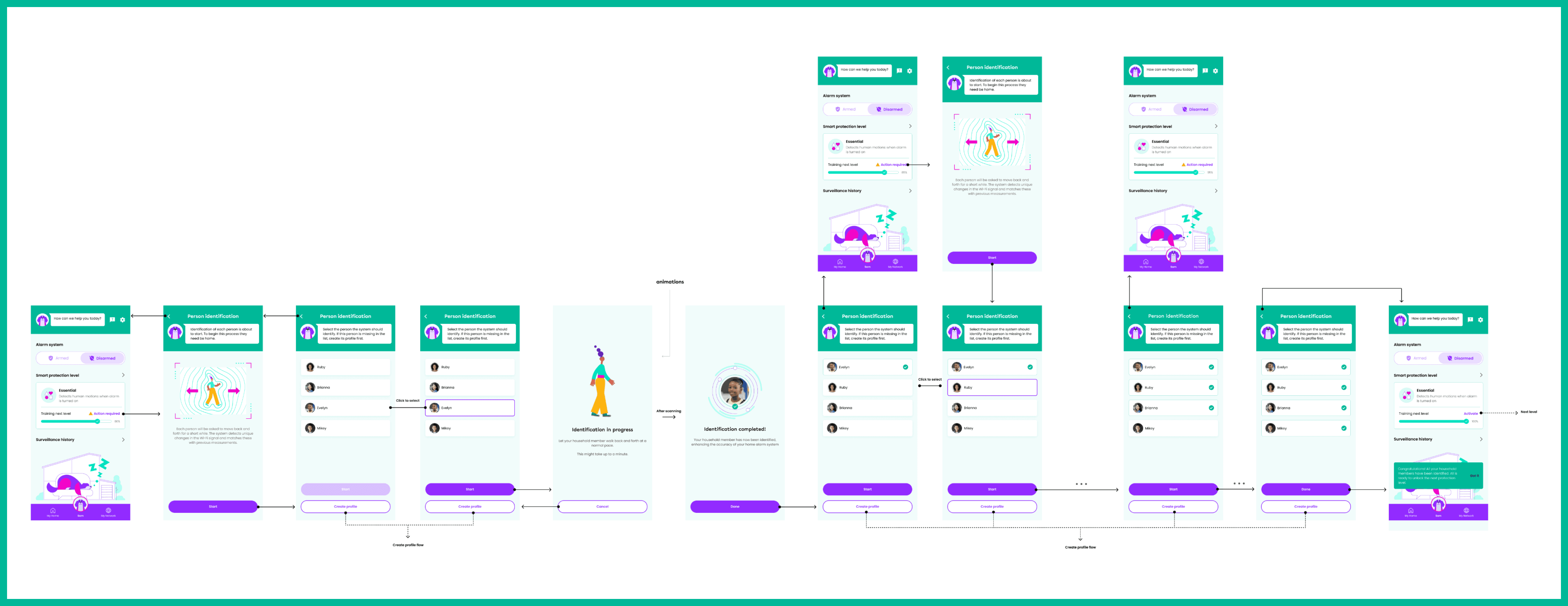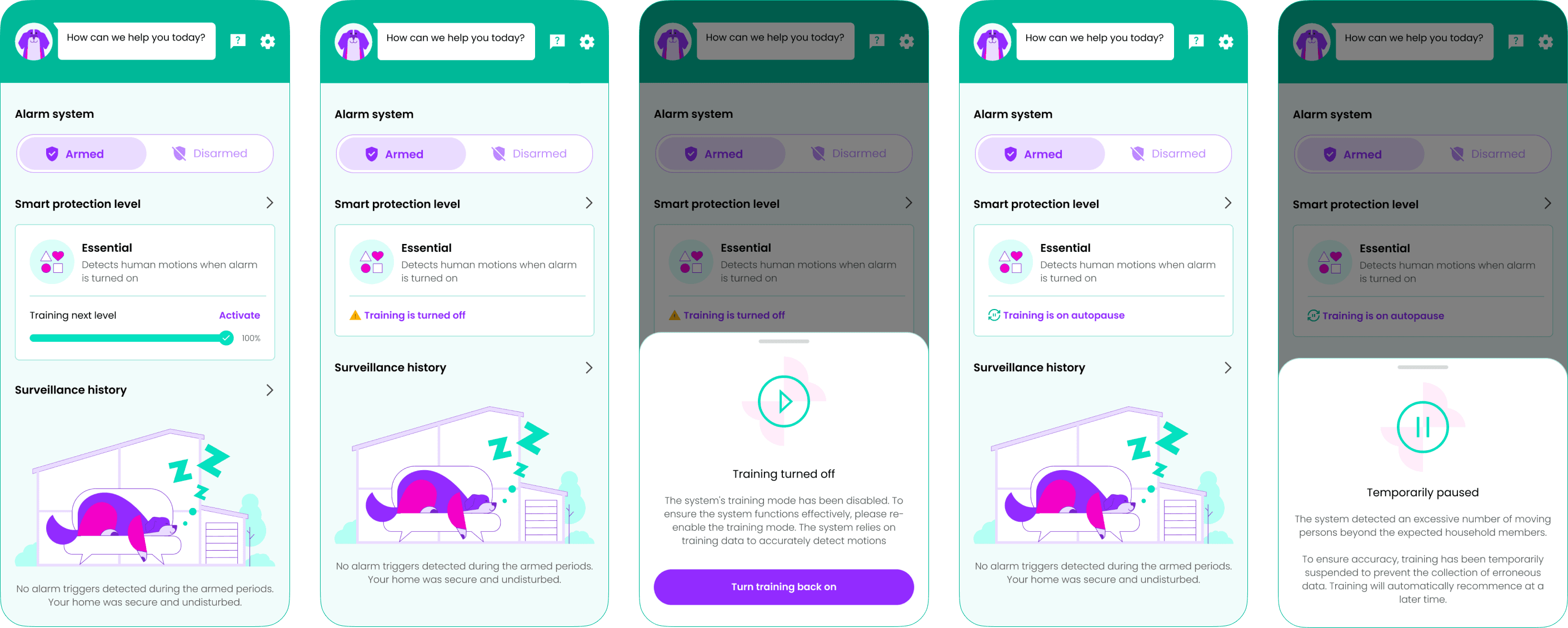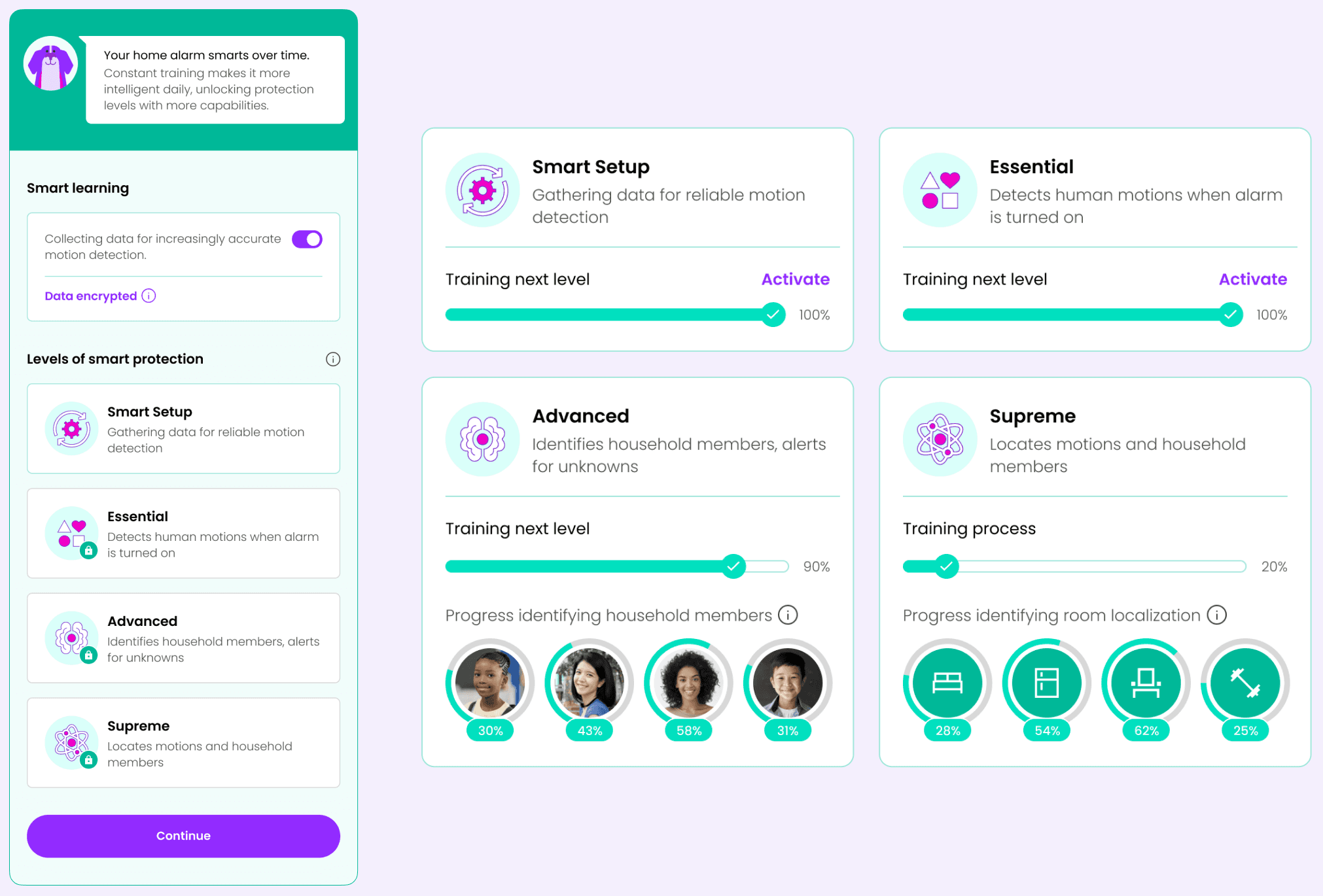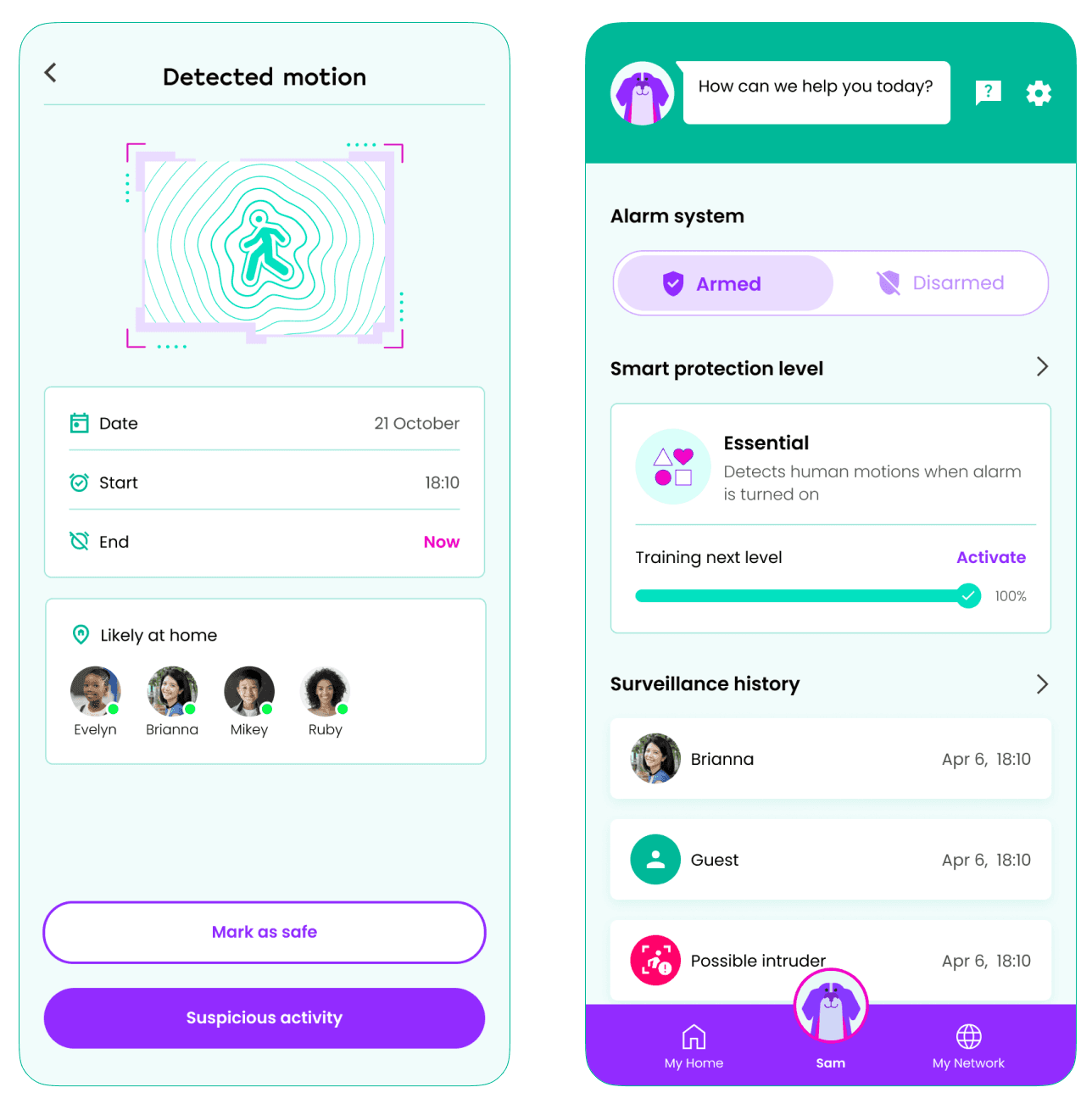
Gamgee App: Home Alarm
Most of us have Wi-Fi at home, but alarm systems? Not so much. In Europe, only 7% of households have a home alarm, while in the UK and US, the figure is around 30-32%. Imagine turning that omnipresent Wi-Fi signal into a vigilant security system. That's exactly what the Home Alarm feature in the Gamgee app does. By analysing the distinct Wi-Fi signatures of connected devices, it differentiates between familiar family members and potential intruders. This innovative feature transforms the user's Wi-Fi network into an advanced security system, offering an extra layer of protection and peace of mind, even when the user is away – without cameras, sensors and other bulky equipment. The system sees through walls, operates efficiently in the dark, and continually adjusts its understanding of the users’ home ecosystem.
Team
DESIGN LEAD: Angelina Severino
BRAND & VISUAL DESIGNER: Angelina Severino
DESIGN & STAKEHOLDER MANAGER: Angelina Severino
UX/UI DESIGNER: Katia Prutkova
ILLUSTRATOR: Lia Krasna
ANIMATOR: Alina Fomin
DATA SCIENTIST: Vineeth Govind
USER RESEARCHER: Nadine Popping
PRODUCT MANAGER: Paul Hendriks
APP DEVELOPERS: Michael Chiou, Viktoriia Levchuk, Tasos Krikonis
My Role
As the Design Lead on this project, I took on the critical role of owning the overall design vision while guiding and mentoring a a talented team that included a UX/UI designer, illustrator, and animator. I ensured our design decisions were aligned with user needs and business goals by managing stakeholder expectations and facilitating clear communication between teams. My role involved closely collaborating with the app development team to seamlessly integrate design elements into the final product, balancing aesthetics with functionality. By inspiring a collaborative environment and providing strategic direction, I helped shape an intuitive and impactful user experience, ensuring the app's success in meeting both user and business objectives.
NDA note
Due to a Non-Disclosure Agreement with Gamgee, I am unable to share detailed user flows or specific UX design details, as they are considered intellectual property. However, I can discuss and showcase the screens and features that are publicly available, offering insights into the app's overall design and functionality without compromising proprietary information.
What is Home Alarm
Gamgee's innovative software leverages the constant Wi-Fi signals emitted by routers and mesh extenders to create a comprehensive security network that covers the entire home. By analysing disruptions in these signals, the system detects movement and goes a step further by capturing the unique traits of an individual's body mass and gait, effectively creating a 'body print' as distinctive as a fingerprint. This allows the system to differentiate between humans, pets, and objects, and even recognise individual people.
When leaving home, users can simply activate the Wi-Fi Home Alarm System via the app, ensuring that any unrecognised 'body print' triggers an immediate alert, keeping their home secure no matter where they are.
Main functionality
Home Alarm includes an armed-disarmed toggle for easy control, and a sophisticated recognition system that learns from Wi-Fi disruptions. It captures data on motion, body, and gait, allowing the AI to distinguish between humans, pets, and objects with precision. Over time, it even recognises household members to avoid false alarms. If too many people are detected, the system temporarily pauses training to prevent inaccuracies, resuming automatically later.
Smart learning
The Home Alarm's smart learning feature evolves with use, offering four levels of protection: from Smart Setup to Supreme. At the Smart Setup level, the system begins by gathering basic data on Wi-Fi disruptions. As it advances, it detects human motion, moving to the next level where it identifies household members based on unique movement patterns. At the Supreme level, the system not only recognizes individuals but also accurately locates their motion within specific rooms, providing comprehensive security tailored to the user's home environment.
Motion detection
The Home Alarm's motion detection feature provides users with detailed insights, displaying the exact date and time when motion was detected and whether it has stopped or is ongoing. By analysing motion history for each household member, the system can predict who is likely home during the detected activity, allowing the user to quickly mark the motion as safe.
Additionally, Home Alarm compiles a comprehensive surveillance history, logging all recent motion activities for easy reference, giving users a clear overview of their home's security status.

Alert allocation flow from the Home alarm trigger message to either marking it safe and allocating it to a household member, or marking it as a suspicious activity and reporting an intruder
Person identification
The Person Identification feature offers an advanced layer of security by utilising Wi-Fi signal patterns to identify individuals. When someone enters the monitored area, they are asked to move back and forth briefly. The system detects the unique disruptions and variations in the Wi-Fi signal caused by the person's movement. These changes are then compared to previously recorded measurements, allowing the system to accurately identify the individual based on their unique movement profile. This innovative feature enhances security by ensuring that only recognised individuals can disarm the system, or interact with it.

Person identification flow: creating individual Wi-Fi signal patterns for each household member, and associating these patterns with one of the profiles in the app / creating a new user profile
Coverage map
To ensure optimal motion detection, users should define all rooms within their home and confirm that each room has at least good Wi-Fi coverage. The Coverage Map tool simplifies this process by providing a detailed scan of Wi-Fi coverage and signal quality throughout the home. This feature allows users to easily identify weak spots or areas with poor connectivity, helping them determine where improvements, such as adding an extender, are necessary. By optimizing their home network, users can enhance the effectiveness of their motion detection system and ensure reliable performance in every room.
Emergency contacts
Adding an Emergency Contacts feature to a home alarm system was crucial for ensuring comprehensive safety. This feature allows users to designate household members and other trusted individuals as emergency contacts, creating two distinct entries: one for household members who may need regular access to system alerts, and another for emergency-only contacts who should be notified in critical situations. In the event of an emergency, the system can promptly alert these contacts, ensuring a swift response and potentially preventing further harm. This added layer of communication enhances the overall effectiveness of the alarm system, ensuring that help is always just a notification away.
Conclusion
In a world where Wi-Fi is nearly universal, the Home Alarm feature in the Gamgee app turns it into a vigilant, always-on security system. By analysing the unique Wi-Fi signatures and patterns, it distinguishes between familiar family members and potential intruders, providing an extra layer of protection without the need for cameras or bulky sensors. This innovative approach offers seamless security that operates effectively in any lighting and through walls, continually adapting to the dynamics of the home. It’s a smart, unobtrusive way for users to transform their Wi-Fi into a powerful guardian, ensuring peace of mind wherever they are.







